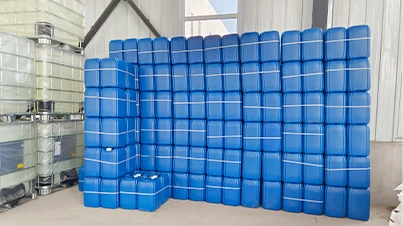use of poly aluminium chloride in water treatment
The Use of Poly Aluminium Chloride in Water Treatment
Water is an essential resource for all forms of life, and ensuring its purity is crucial for health and safety. One of the significant advancements in water treatment technologies is the use of coagulants, and among these, Poly Aluminium Chloride (PAC) has emerged as a widely utilized agent. With its effectiveness and versatility, PAC plays a vital role in the clarification of water and wastewater.
What is Poly Aluminium Chloride?
Poly Aluminium Chloride is a chemical compound made from the combination of aluminum hydroxide and hydrochloric acid. It is a polyionic form of aluminum, which allows for a broader range of applications in water treatment processes. The high charge density of PAC makes it an ideal coagulant, capable of binding impurities and suspended particles in water effectively.
How does PAC Work?
The coagulation process is essential in removing suspended solids, colloidal particles, and colloidal organic matter from water. When PAC is added to water, its positively charged ions neutralize the negatively charged particles found in the water. This neutralization process causes the particles to aggregate and form larger clusters, or flocs, which then can be easily removed through sedimentation or filtration.
Moreover, PAC operates effectively over a wide pH range, making it versatile for various water conditions. It also works well in low dosages compared to other coagulants, which can lead to lower operational costs and reduced sludge production.
Benefits of Using PAC in Water Treatment
1. Efficiency PAC demonstrates a high rate of floc formation, leading to rapid sedimentation and improved clarity in treated water. This efficiency is significant in both drinking water purification and wastewater treatment processes.
use of poly aluminium chloride in water treatment

2. Lower Dosage Requirement Unlike traditional coagulants like aluminum sulfate, PAC requires a lower dosage to achieve the same level of turbidity removal. This feature contributes to reduced chemical costs and minimizes the amount of sludge generated during treatment.
3. Versatility PAC can be used in a variety of applications, including municipal drinking water treatment, industrial wastewater treatment, and even in the treatment of surface and groundwater. Its adaptability makes it suitable for different sources of water and varying pollution levels.
4. Improved Residuals The residuals of PAC-treated water tend to have lower aluminum content, which is a critical aspect of ensuring water safety. This lower residual is particularly important for drinking water applications, where aluminum levels are strictly regulated.
5. Temperature Resilience PAC can perform effectively under different temperatures, making it suitable for seasonal changes and varying climatic conditions that affect water quality.
Environmental Considerations
The environmental impact of coagulants like PAC is minimal when used appropriately. Its formulation allows for the efficient removal of contaminants, thereby reducing the load on downstream processes and ensuring compliance with environmental discharge standards. However, it is essential to monitor residue levels to ensure compliance with relevant health and environmental regulations.
Conclusion
Poly Aluminium Chloride is a powerful tool in the field of water treatment, offering numerous benefits such as efficiency, lower dosage requirements, and versatility across various applications. As water quality standards become increasingly stringent to safeguard public health, the role of effective coagulants like PAC becomes more vital. By harnessing the capabilities of PAC, water treatment facilities can enhance their operational efficiency while ensuring safe and clean drinking water for communities. As research continues to explore new formulations and applications, PAC is poised to remain at the forefront of innovative solutions for water treatment challenges in the future.
-
Water Treatment with Flocculant Water TreatmentNewsJun.12,2025
-
Polymaleic AnhydrideNewsJun.12,2025
-
Polyaspartic AcidNewsJun.12,2025
-
Enhance Industrial Processes with IsothiazolinonesNewsJun.12,2025
-
Enhance Industrial Processes with PBTCA SolutionsNewsJun.12,2025
-
Dodecyldimethylbenzylammonium Chloride SolutionsNewsJun.12,2025





